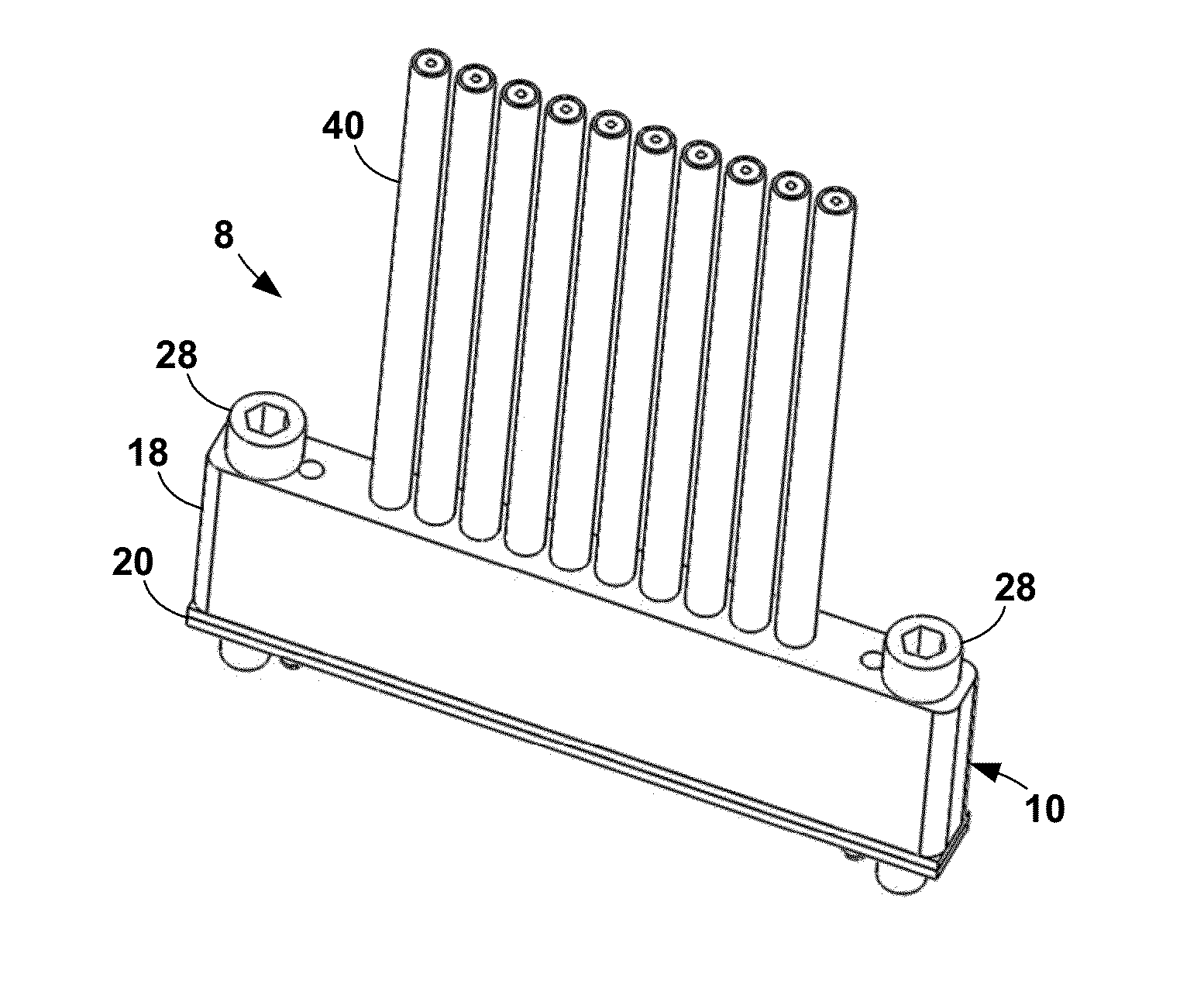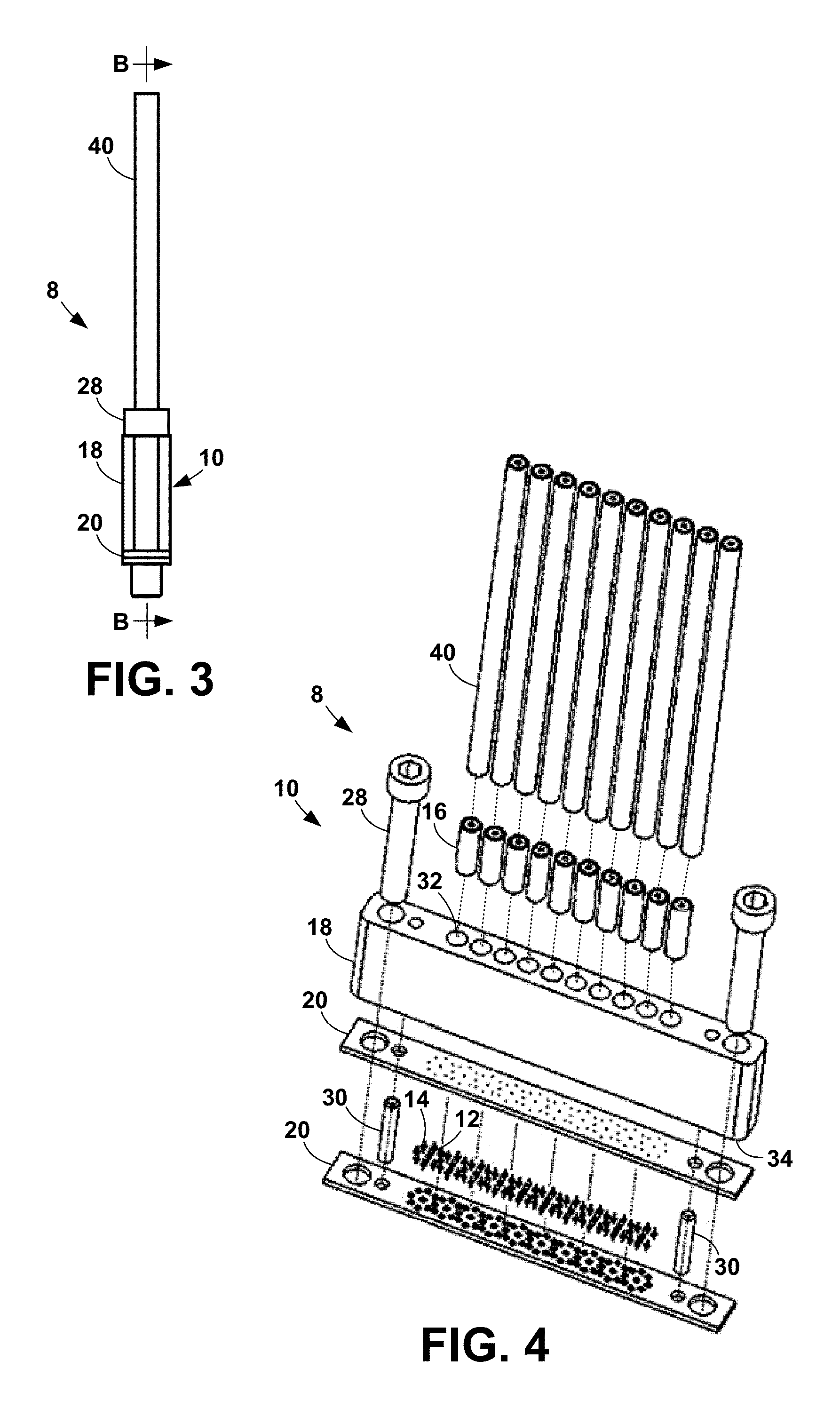Controlled-Impedance Cable Termination with Compensation for Cable Expansion and Contraction
- Summary
- Abstract
- Description
- Claims
- Application Information
AI Technical Summary
Benefits of technology
Problems solved by technology
Method used
Image
Examples
embodiment 60
[0101]The present invention contemplates that the ferrule may not be an independent component, but is integrated with the anchor block 18. In other words, the ferrule bore 190 is formed directly in the anchor block 18. This structure only works when the anchor block 18 is electrically conductive. FIG. 22 shows the partial air dielectric embodiment 60 of FIGS. 8 and 9 with the ferrule as part of the anchor block 18. The cable shield 46 is attached directly to the anchor block 18, as at 188.
embodiment 200
[0102]FIG. 23 shows the air dielectric embodiment 200 of FIGS. 20 and 21 with the ferrule as part of the anchor block 18. The shield 46 is attached to the ground boss 192, as at 194. The ground boss 192 is inserted into the ferrule (anchor block) bore 190 and secured, as described above with reference to the embodiment of FIGS. 20 and 21.
[0103]The term, ferrule bore, is used to describe the bore 190 into which the dielectric 196 is installed, whether it is in the anchor block 18 or in a ferrule 36 installed in the anchor block 18.
[0104]Referring to FIGS. 24 and 25, typically, the ECC 16 will be relatively flush with the anchor block face 34. However, in some designs, particularly with removable attachments and where the ferrule is a separate component from the anchor block 18, the ECC 16 may not be exactly flush with the anchor block face 34, that is, it may be slightly recessed into or protruding from the anchor block face 34. That recession or protrusion can be as much as 0.050 in...
embodiment 300
[0114]The present invention also contemplates that the signal contact 12 is an element of the ECC 16. An embodiment of such a design 300 is shown in FIGS. 31-34, where the signal contact is a pogo pin that is an element of the ECC. It is a press-fit embodiment with a partial air dielectric, similar to the embodiment of FIGS. 8 and 9. This embodiment 300 has a cylindrical ferrule 302 with an axial bore 304. The bore 304 has several sections. The cable section 306 has a diameter that is adapted to accept a cable 40 with the sheath 48 stripped back, as in FIG. 32. The shield 46 is soldered to the ferrule 302, as at 312.
[0115]The air section 308 is empty but for air and operates as an extension of the cable dielectric 44. As shown in FIG. 34, the center conductor 42 extends through the air section 308. The parameters of the air section 308, primarily the length and diameter, are adjusted to maintain impedance control in a manner known in the art.
[0116]The dielectric section 310 is sized...
PUM
 Login to View More
Login to View More Abstract
Description
Claims
Application Information
 Login to View More
Login to View More - Generate Ideas
- Intellectual Property
- Life Sciences
- Materials
- Tech Scout
- Unparalleled Data Quality
- Higher Quality Content
- 60% Fewer Hallucinations
Browse by: Latest US Patents, China's latest patents, Technical Efficacy Thesaurus, Application Domain, Technology Topic, Popular Technical Reports.
© 2025 PatSnap. All rights reserved.Legal|Privacy policy|Modern Slavery Act Transparency Statement|Sitemap|About US| Contact US: help@patsnap.com



